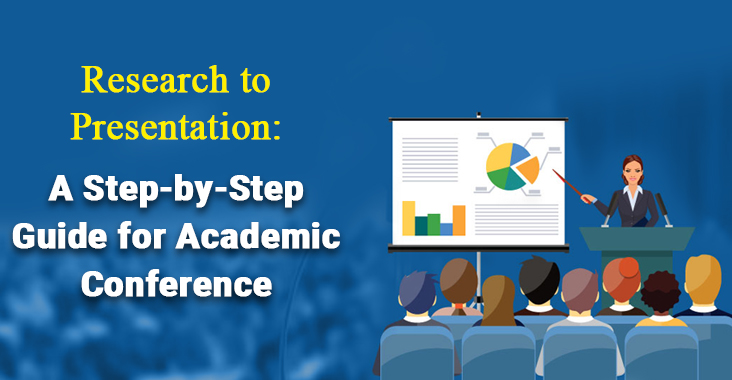Academic conferences provide an excellent opportunity for students, scholars, researchers, and professionals to showcase their work, share ideas, and network with others in their field.
Whether you’re an experienced scholar or a newbie to the subject, giving a conference presentation can be a gratifying experience.
However, the path from research to an engaging presentation can be difficult. That’s why we have created this blog where you’ll learn 10 crucial steps to make your presentation not only successful but outstanding.
Let’s see in detail.
1. Take a deep breath and keep it cool!
When you’re presenting, you can get nervous and accidentally stutter or display closed & defensive body language.
In these situations, you can pause for a second, take a deep breath and continue before getting more anxious.
2. Captivate your audience with confidence
For a successful presentation, you have to aim to effectively engage your audience. To keep the audience’s interest, express positive & open body language, change up the tone of your voice, and maintain eye contact. Make sure your voice is clear and loud to showcase confidence.
3. Dress to impress and arrive early
Make sure you dress appropriately for the presentation. To increase your confidence, choose comfortable yet professional clothing.
Familiarize yourself with the area by arriving at the conference venue early.
4. Have your backup plan ready
Make a backup plan in case of any technical issues during your presentation.
This includes bringing a USB drive with a copy of your presentation, practising with the equipment, and having the contact information of organizers in case of technical issues.
5. Be prepared for the tricky questions
The Q&A session can be tricky sometimes. Here’s how you can be ready:
- Prepare potential research and methodology-related queries.
- Prepare brief and clear responses to these questions.
- Be open to constructive feedback and debate.
It’s fine to confess you don’t know the answer to a question and offer to follow up with the questioner later.
6. Practice, Practice, Practice!
Practice is the key to a great presentation. Rehearse your presentation several times to improve your delivery and boost your confidence.
You can practice in front of peers or mentors who can offer feedback. Also, make sure to pay attention to the tone, timing, and simplicity of your speech.
7. Put art into your slides
Visual aids, such as slides, can significantly improve your presentation. Here are some pointers on creating visually engaging slides:
- Keep presentations simple, with little text and bullet points.
- Use visuals to explain your arguments, such as photos, graphs, and charts.
- Keep fonts, colours, and layout consistent.
8. Structure your presentation for success
Organizing your presentation is crucial and one of the most important factors of an outstanding presentation. Here are some tips:
- Begin with a brief introduction that grabs the interest of your audience and provides an overview of your research problem.
- Provide context by summarizing the existing literature in your subject area.
- Describe the methodology you used.
- Explain your findings using statistics and proof while presenting the results.
- Analyze your findings and analyze their consequences and significance.
- Summarize the essential ideas and provide crucial takeaways to your audience.
- Prepare for audience questions during the Q&A session.
9. Thoroughly read conference guidelines
Once you’ve decided on a conference, carefully review the guidelines given by the organisers.
These guidelines frequently include information on the format, duration, and technological requirements of the presentation.
Following these rules is critical for a successful presentation.
10. Choose the correct conference
Before you begin the process of preparing a presentation, you must first select the right academic conference to attend. You can consider the following factors before choosing the conference:
- Relevance: Ensure the conference is relevant to your study field and goals.
- Target Audience: Determine who will be attending the conference such as specialists or colleagues in your field.
- Theme and Scope: Determine whether the conference theme and scope are relevant to your study.
- Location & others: Assess the location, date, registration costs, and other aspects of the conference beforehand.
Conclusion
It can be a rewarding experience to present your research at an academic conference. You can ensure that your presentation is well-structured, interesting, and makes a lasting impact on your audience by following this step-by-step guide. Remember that a well-prepared presentation not only communicates your research but also helps you build important relationships within your academic community.
